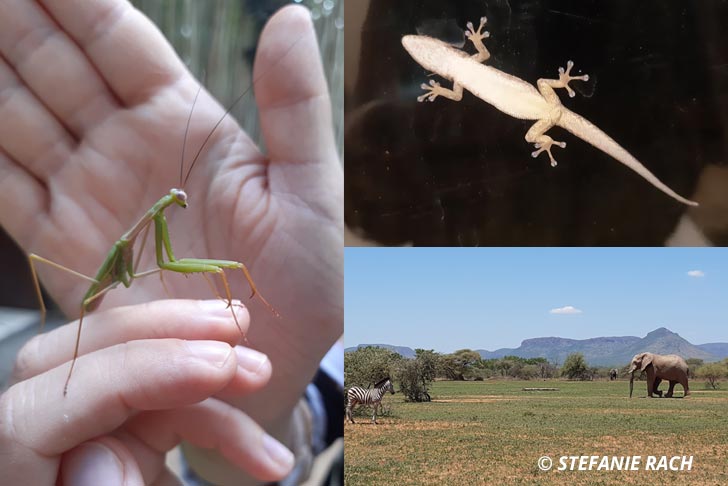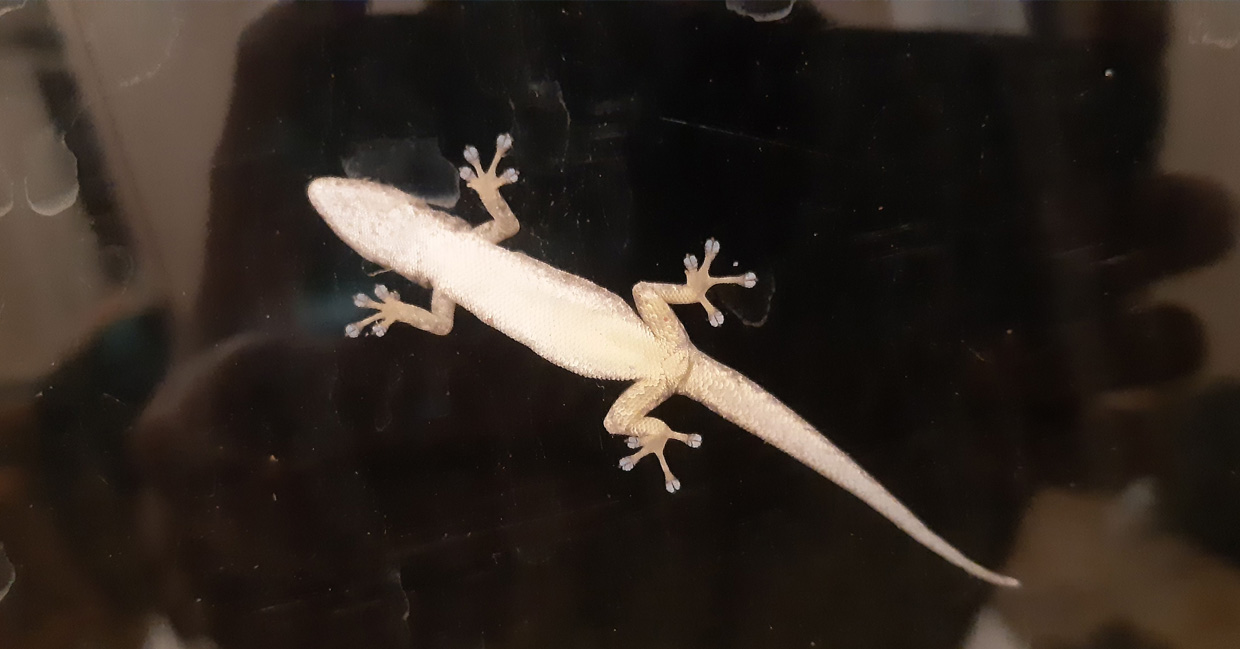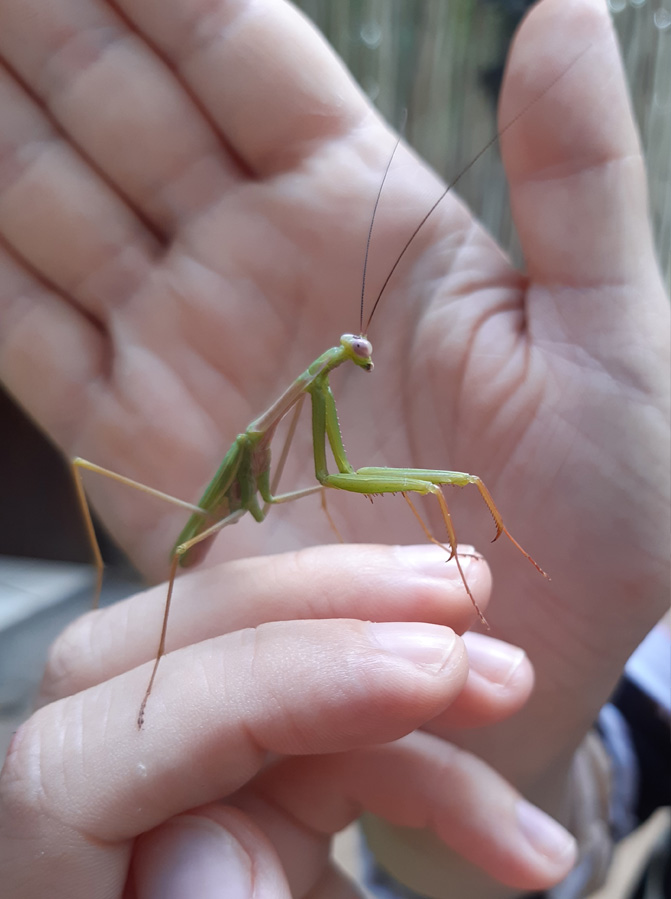Who would have thought that?
No one surprises us, impresses us, enchants us as much as Mother Nature does. Over the course of millions of years, since the emergence of the very first cell, Mother Nature has created the truly strangest curiosities. You can marvel at some of these in this in round 2 of our bush quiz (while testing your knowledge of the flora and fauna of the African Savannah):
If you missed it, scroll down on the blog page to find round 1 of our bush quiz “Who would have thought that?”

By Stefanie Rach
1. As soon as the sun goes down, they come out of their hiding places and scamper along the walls or sit on the ceiling looking down at you: Geckos seem to defy the earth’s gravitational pull by effortlessly adhering to walls, trees and even smooth panes of glass. How do they do this?

a) Geckos have special scales on their feet that act like suction cups.
b) Geckos’ feet produce a secretion that has similar properties to the glue on sticky notes.
c) Geckos have hairy feet: tiny hairs on the soles of their feet stick to surfaces.
The matter of gecko feet has not yet been completely clarified. So far, it has been discovered that geckos have millions of tiny hairs on the sole of their feet (so-called setae), the tips of which split into hundreds of bristles (spatulae). At first, it was assumed that Van der Waals forces alone were responsible for adhesion: an attractive force between molecules on the surface and those of the countless fine hairs on the gecko’s foot. Next, the theory of electrostatic attraction was hotly debated: as soon as a gecko foot touches a surface, it is positively charged, but the surface is negatively charged. There is no agreement on this theory in the scientific community. The only thing that is certain is that it somehow revolves around the hairs.
2. Let’s talk about balls (no, not footballs): Considering that an elephant’s shoulder height is about 3.20 metres and its weight is 5 to 6 tonnes, its testicles are…

a) …simply massive: They have an average length of 30 to 40 cm and a weight of 7 to 10 kg.
b) …disproportionately small compared to their body size: Since they fit tightly to the lower body for protection, they are just 5 cm long and weigh about half a kilogram.
c) …only rather moderately large (up to 17 cm long, weighing on average 2 kg), as they are located inside the body behind the kidneys.
In mammals, the testicles develop in the embryo in the abdominal cavity near the kidneys. From there, they then drop to the lower abdomen or scrotum – with the exception of some animals such as shrews, manatees and elephants. In a study, researchers analysed the DNA of 71 mammals and found that in some African species there are rudiments of two genes that cause testicular drop in the other mammalian species. This suggests that the ancestors of these animals had external testes, but that this changed during evolution. Why? Hard to say. Sperm cells are very picky when it comes to their comfort temperature. It is too warm for them in the abdominal cavity, which is why Mother Nature came up with the idea of dropping testicles. Maybe this is different for elephants (and some of their relatives) and their sperm don’t need a breath of fresh air to be fully functional? Maybe quantity trumps quality in the elephant’s act of procreation: for when an elephant ejaculates, it releases 200 billion sperm (humans only 250 to 500 million).
3. Have you ever wondered if insects can actually hear? What about the praying mantis: does it have ears? And if so, how many? Or can praying mantises perhaps not hear at all?

a) Praying mantises have an ear on their body with which they can perceive ultrasonic waves (like those produced by bats).
b) Praying mantises cannot hear in the true sense of the word as we humans can; rather, they sense vibrations through their antennae.
c) Praying mantises have three ears on their heads with which they can perceive low frequency sound waves (like the buzzing of bees and beetles on which they prey on).
In terms of hearing, mantises are cyclops: they have only one ear and it is not on their head, but below their chest, in the middle of their abdomen. The ear is a small slit behind which a cavity with two eardrums is hidden. However, praying mantises do not hatch from the egg as an ear cyclops. When they are still young, structures that later develop into the two eardrums are on either side of the body. These structures then move to the middle of the body, which gives the mantis more legroom – after all, it would be annoying to scrape the ear with your knee every time you jump. With this rather special ear, mantises can perceive ultrasound waves. Their natural predators are bats, which use echolocation to navigate through the area. When a mantis senses ultrasound waves in its vicinity, it performs a grandiose dive in tight spirals that the bat cannot follow.
Every problem has a solution, every solution needs support.
The problems we face are urgent, complicated, and resistant to change. Real solutions demand creativity, hard work, and involvement from people like you.

Stay in the know.
Be ready to act.
To keep up to date with our latest news, events, marches,
campaigns and fundraising activities.
